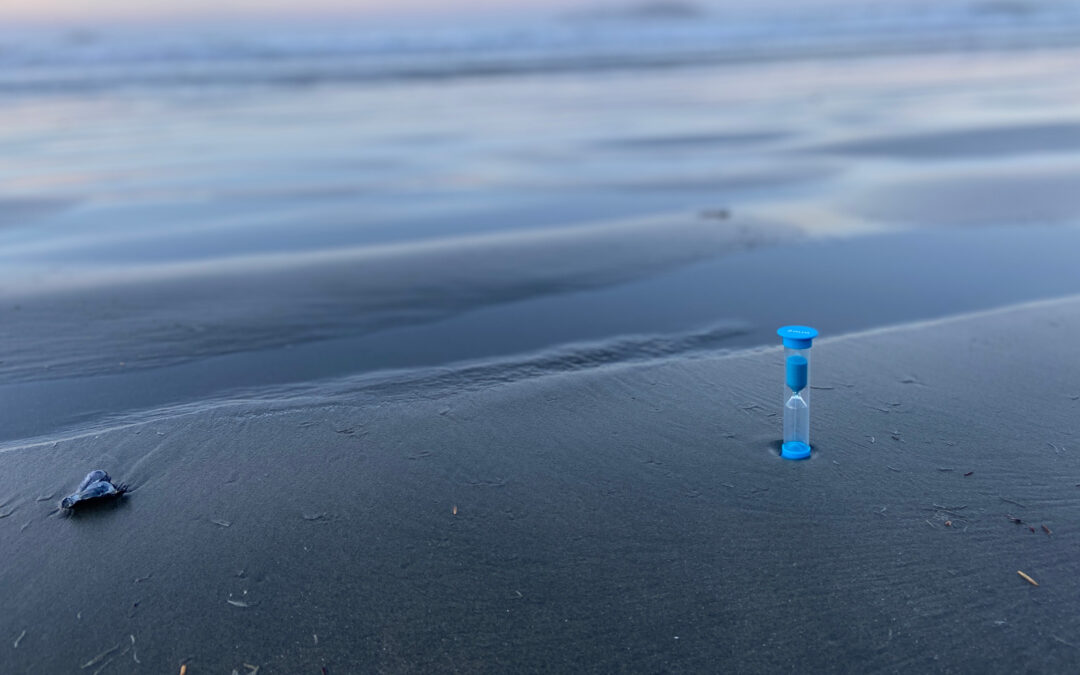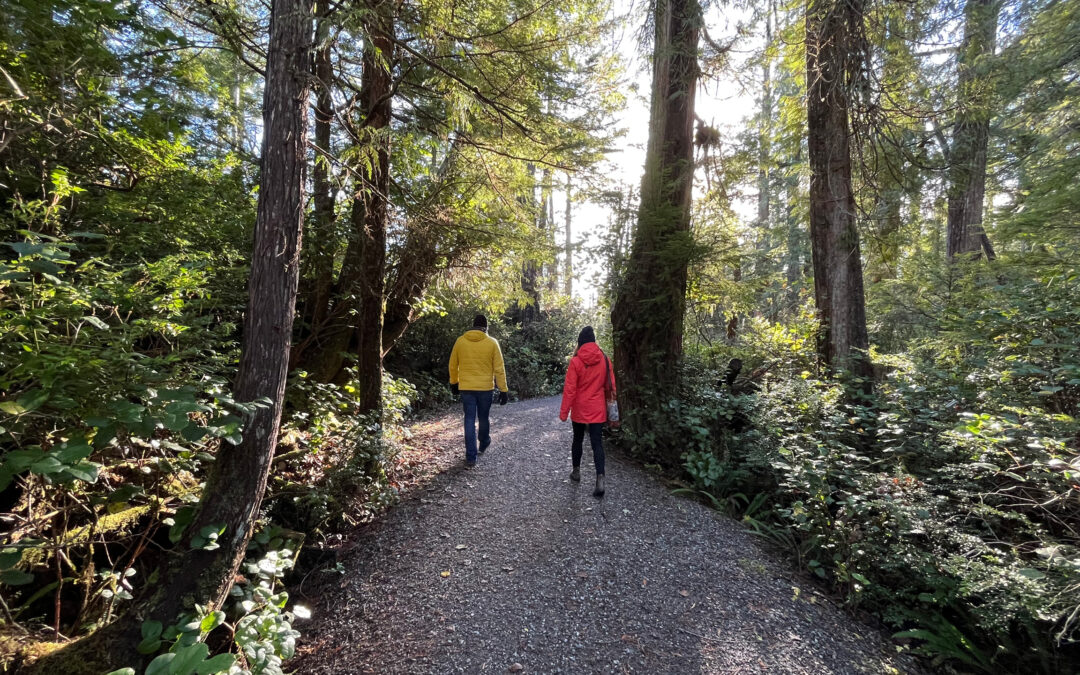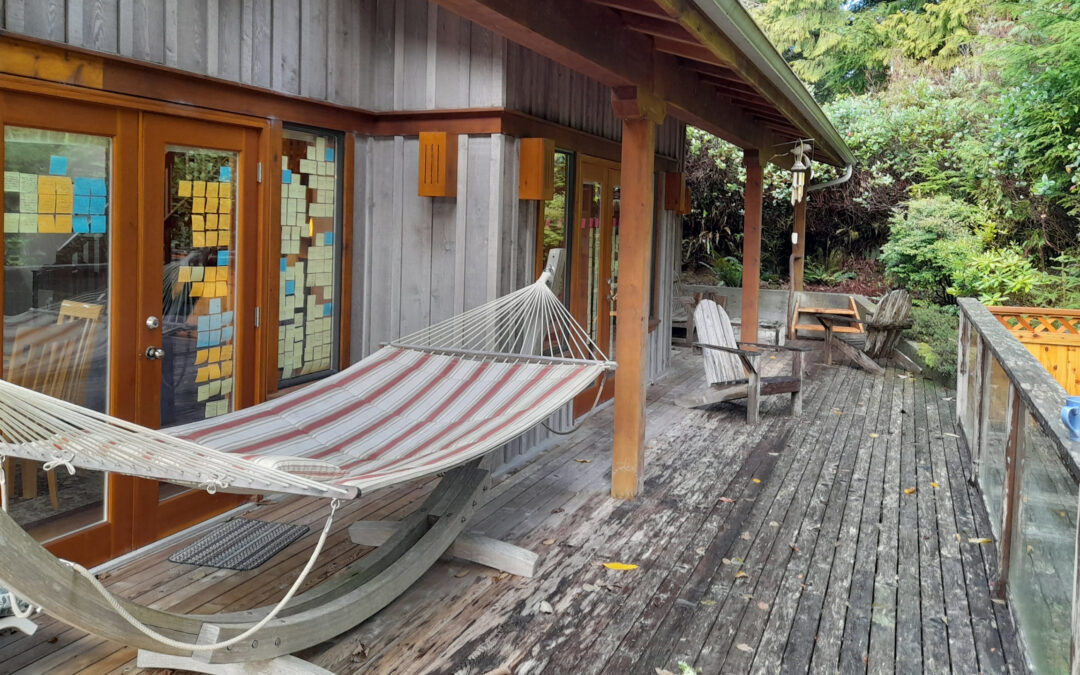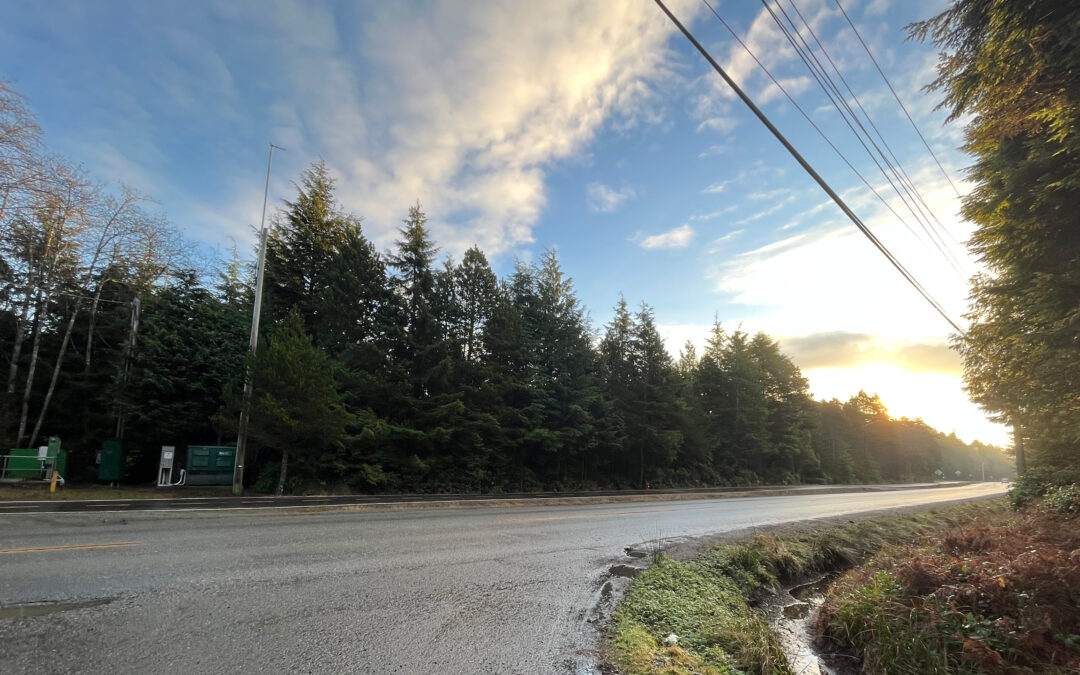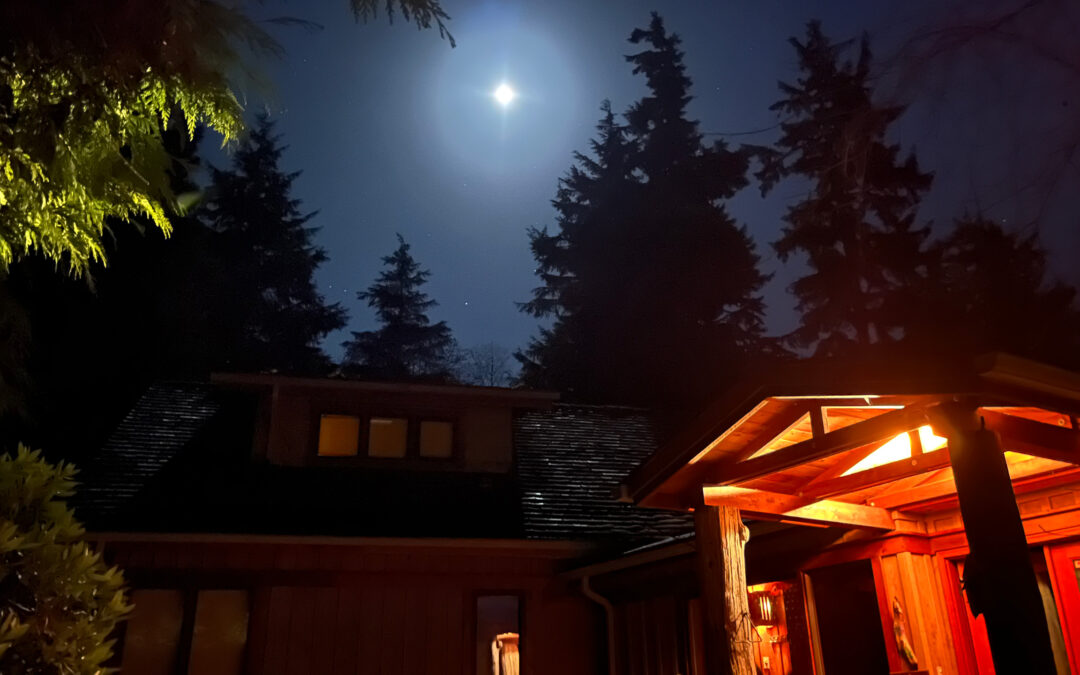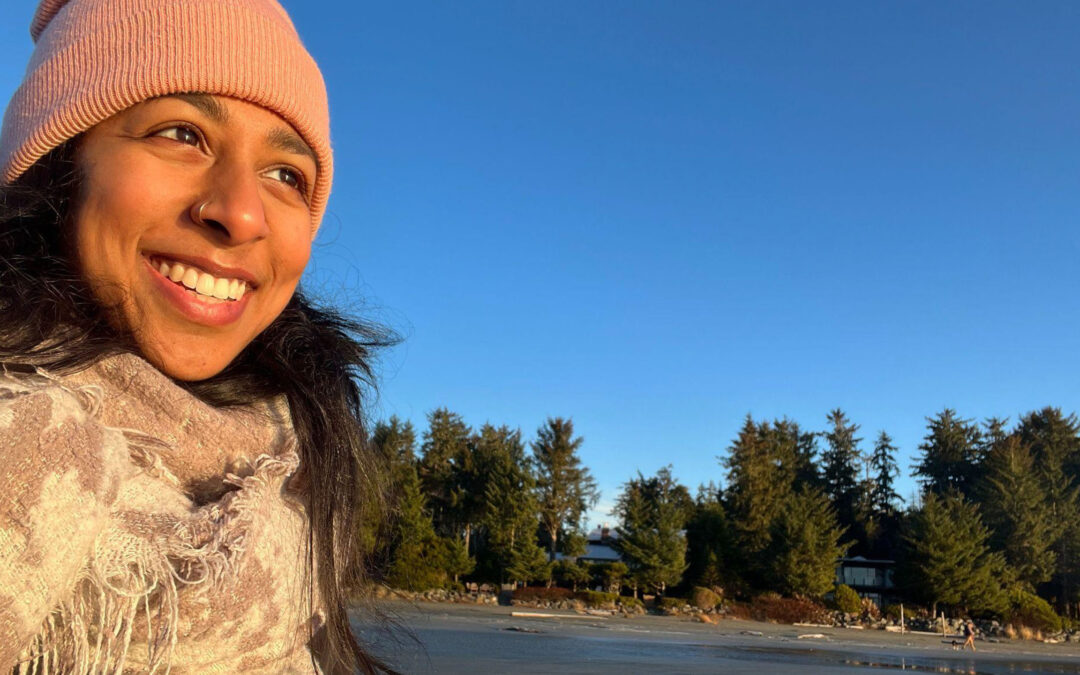Alongside honing a clear purpose for the Mortal Method retreat, another key contributor to its success was in how we prepared for our time together. This preparation, which took several forms, allowed us to be more present in ourselves, with each other, and with the work at the retreat. It included:
1) Filling out a Pre-Care Survey
Doing this work in ways that honour our bodies involved anticipating some of our care needs in advance and having those needs inform how we planned for and designed the retreat.
In the month before the retreat, I had created and shared a pre-care survey with the team. The concept and format of this survey were inspired by similar surveys shared by the Department of Imaginary Affairs to 1) gauge the care needs of their retreat participants and 2) invite self-reflection on these topics in advance of the retreat.1 The survey included questions about everything from dietary restrictions, preferred ways of working, how much rest we need, how we like to recharge, our boundaries, our physical / mental / emotional / spiritual care needs, our relationship to body- / art-based exercises, and our expectations about retreat outcomes.
While these surveys are typically deployed through a form where the responses are kept anonymous (if shared at all), the Mortal Method team agreed that there was enough trust between us for us to populate all of our responses into the same Google Doc. This meant that in addition to having this data to inform the structure and content of the retreat programming, we also had the chance to read each other’s responses and ask questions to clarify and better understand each other’s needs, boundaries, and preferences. As three people who had never previously spent that much time together in-person, the survey pushed us to begin envisioning ourselves in an environment where we would be sharing time and space, and articulate the boundaries of that relational container.
“It was also useful for me to know that the two of you clearly need alone time. Even though I am energized by alone time, I get a lot of it because I’ve been working from home a lot, so I love time around people. That’s just good for me to know because I can anticipate it and go for a walk on my own and call someone or schedule time for myself to read or catch up on emails or whatever so that I don’t annoy you. So thank you for letting me know in advance.” – JB, Nov 17
“I think it was a really thoughtful list of questions. Some were things I had anticipated and others were ones where I was like, “Oh, that’s a really good question, what would be my boundary with that?” – JB, Nov 10
“The whole process in terms of this retreat [i.e. staying / working in a shared AirBnB], it does make it very different than, say, going to a hotel. There’s a lot of boundaries that are being fractured by doing this [in this way]. And the survey that you put together reveals that there’s a lot that needs to be taken into account as a result. – AB, Nov 10
1 Please credit the lineage of this practice (at least where we learned it from) if/when you share it.
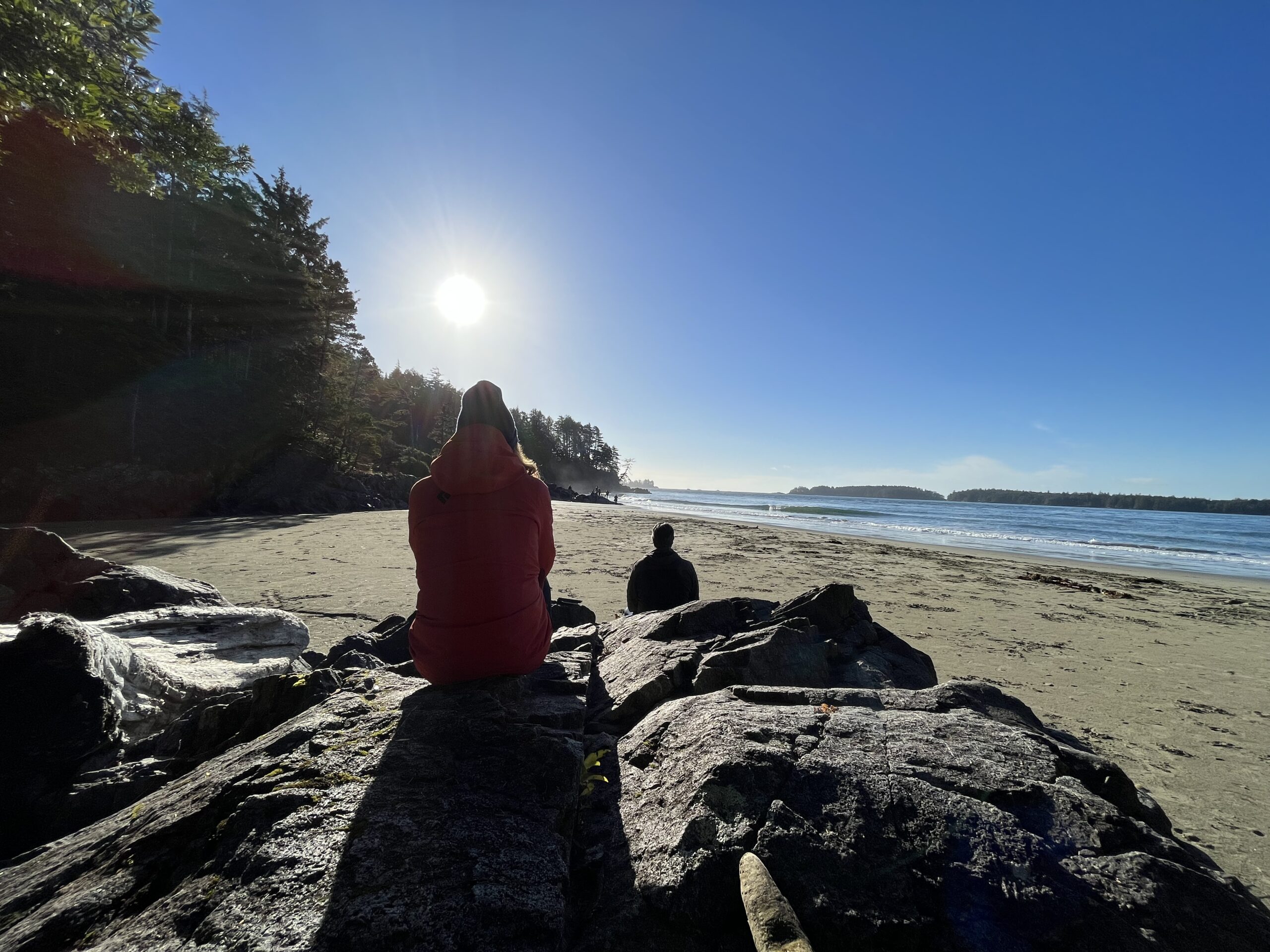
2) Engaging in a 30-Day Practice of Apprenticing Mortality
In setting the intention of wanting to build out and test the Mortal Method by embodying it, we had talked about the idea of “apprenticing mortality.” While we are, by nature, mortal beings, we are living in a world that largely denies our mortality. In this sense, tuning into and learning from our mortality requires conscious effort, often in ways that contradict how we’ve been programmed to think, do, and be in this world.
It was this tension that pushed me to propose the idea of a 30-day practice of apprenticing mortality in the lead-up to the retreat. Each morning, for these 30 days, I would send an email with a daily prompt that was inspired by one or more of the mortality-related concepts, paradoxes, and/or experiences that had emerged in our conversations about the Mortal Method. The email would include a photograph, some context-setting about the day’s topic, some definitions where helpful, a main question prompt about the topic, a series of sub-prompts that provided a range of access points into the main question, and a set of accompaniments (e.g. songs, poetry, artwork, videos, etc.) to accompany participants through their process of engaging with the prompts. Participants were invited to journal on each day’s prompt, and record their reflections in a way that could then feed into our discussions at the retreat.
The 30-day practice prepared us and set us up for success in two ways:
Easing ourselves into mortality-related concepts
While we were all fairly comfortable talking about mortality, my sense was that seven consecutive days of contending with our personal relationships to all things death and dying would need some easing into. Specifically, our bodies would need time to adjust to and integrate that level of introspection, interrogation, and potentially, disruption. In this sense, the 30-Day Practice was a way of vaccinating ourselves to the concepts we’d be diving deeper into at the retreat. It gave each of us an opportunity to see how our bodies responded to certain prompts, which topics were harder or easier to contend with, what parts of us were activated and why, and what we needed to care for ourselves when doing this work. It helped us better prepare to care for ourselves and each other at the retreat, when we would be doing this work full-time.
“This is exactly the kind of thing I love because it stretches me and it does open us up to thinking differently, right? This is the thing that you do that I love so much is that you pulled in all the themes from our earlier conversations, the themes from the key concepts…and it advances the work we’re doing…I think I might journal each of these things each day so that when I bring the journal [to the retreat], I’ve done not just the pre-work on myself, but I have ideas because these things are tying into the concepts we want to be talking about. So I’m happy to make time for it…I think this is so wise to talk about integration, to get us practicing it before we get there so that we’re not coming in cold.” – JB, Oct 28
“Like Julia said, you’re pulling in so much of what we’ve spoken about, and the exercises would stretch me to engage with them in ways that I don’t normally do. I was thinking that I would really need to pay attention to your instructions because you’re asking me to pay attention to what my body is saying about the topic, right? …It would stretch me and require me to engage with these things in a deep way, and much more. This would be lovely to do for an extended period of time because then it becomes a practice, like twenty one days or something like that…And it’s also not, “Here’s 50 chapters to pretend you read before the meeting.” This is something I would actually do. The joys that come with the journalling and then there will also be stuff written for what we’re going to be doing. So that’s really cool.” – AB, Oct 28
“We’re engaging in it every single day…it keeps reinforcing to meet the value of doing this, but also clarifying the content for me more. Because I keep having these little like AHA connections where I’m like, oh, this concept that we talked about here is also popping up there. And so that just feels like a signal to me that we’re on the right track if we keep reading different things about mortality and it’s mentioning paradoxes or mentioning finitude. And I feel like our definitions then, while not exhaustive are robust and rich.” – JB, Nov 10
“I think doing this has been so good for…I don’t know about each of you, but in my journal entries now, I refer back to the past weeks as well. Even the terminology. There’s a language that comes up now as framing devices, and it’s becoming a body of concepts that have a relationship with one another. I think we’ve built that now, and we’re going [to the retreat] with something that’s got a little bit more weight to it. And so now it’s really just, “how do we want these things to flow in relation to one another?” – JB, Nov 24
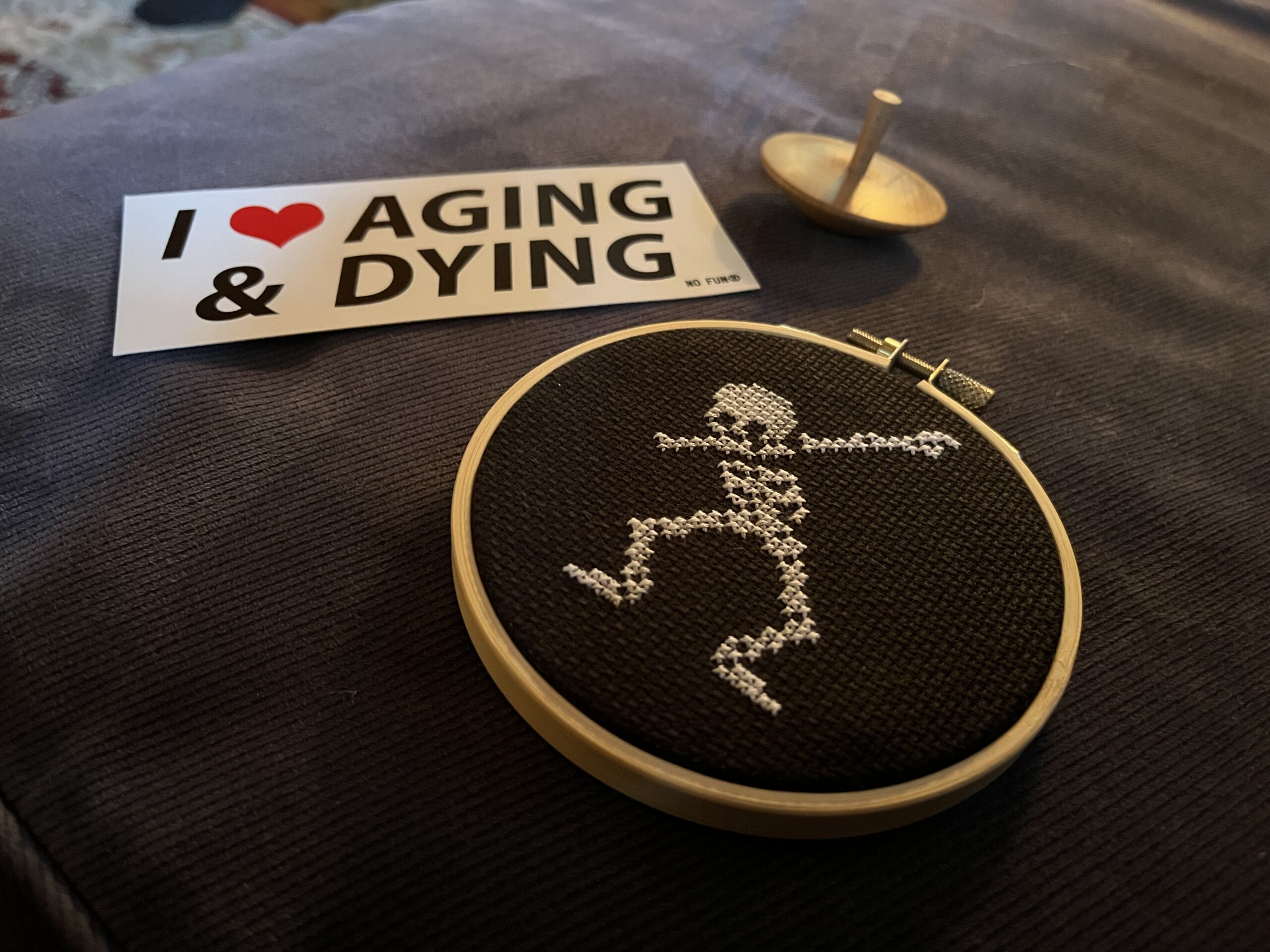
Practicing in context
Doing the practice while we were still in our home environments was also intentional. For one, there can be a sense of safety in being in a familiar place with access to familiar supports and coping strategies while moving through a new or unfamiliar terrain of internal reflection. Secondly, it was important to us to ensure that the work we did during the retreat didn’t happen in a vacuum. We knew that being able to retreat was a privilege and that the Mortal Method needed to be something that was accessible for people, including us, to learn, adapt, and apply in context – in the places where we live, work and play. Engaging in the practice while in our home environments allowed us to become more aware of how our day-to-day realities can facilitate, hinder, and/or change our capacity to work in ways that honour our mortality. In this sense, we knew we would be returning post-retreat to a place and a life that had already hosted this 30-day Apprenticeship with Mortality, and that we were capable of recreating the ethos of the retreat within the context of our home environments, the roles we play, and the responsibilities we hold.
“Leading up to the retreat, I keep looking forward to it as, “Oh, we’re going to have this week in this beautiful, tranquil setting where we get to push everything else aside and focus on that.” And reminding myself, “you can’t just put it off as that’s when I will do the work of quieting down and reflecting.” I need to do that all the time and not place too much expectation or hope on that trip being that for us.” – JB, Nov 3
“How do we give people an experience of these concepts? How do we give them a form of apprenticeship?… There are ways in which this practice has set a standard for “this isn’t something you can just jump into cold. You need the warm-up. You need the runway for the different metaphors that have been used.” And the practice just really, really drove home the importance of that.” – JB, Dec 1
“I think the idea [for the practice] came from this instinct that I really do believe that our bodies need time to get into this space… I think the facilitator in me was trying to extend our timeline [through the practice] so that we could have more time in it, and we did. Now it’s like bonus time that we have [at the retreat].” – MM, Dec 1
3) Having a draft of the “deliverable” complete pre-retreat
One of the fears that emerged in the lead-up to the retreat was around coming out of the retreat with “nothing to show for it.” As much as we wanted it to be a thinking retreat, we were also craving a record of our thinking and how we arrived at the key elements of mortality that inform our method. While there were some differences in the exact form of “deliverable” that we were each invested in creating from this work, there was alignment around the value of having a PDF of sorts that would introduce the Mortal Method as we conceptualize it, articulate our insights from embodying it, and serve as a guide for those hoping to apply it. Naming the fear of having “nothing done” by the end of the retreat opened up the space for me to suggest, “What would it look like to have version one of the PDF drafted before we get to the retreat? That way, we go in with the heaviest lifting out of the way and can use our time at the retreat to dive deeper into any questions / gaps / concepts that need more clarifying. That way, we don’t have the weight of producing a deliverable weighing on us during the retreat, and we can focus on embodying and honing the ideas we’ve already captured in the first draft of the PDF.” This suggestion created what felt like an energetic exhale in our Zoom meeting.
“I like the idea of having the document done or at least a draft of it done before. I think there is something really liberating about that. And then being able to pull it apart, play with it, challenge it, and take it a step deeper [at the retreat].” – AB, Nov 3
“I love the idea of having a version one for when we go, I think it absolutely does assuage that fear for me. And then, as you said, it is liberating, then it does feel like we have something we’re working with…Then that work [at the retreat] will be richer, and it won’t just be us sitting around workshopping a PDF. That would be really reassuring to me to start with the version one and not be too precious about the idea of polishing it or finishing it by the end, but just saying, “Well, this is what we’re starting with and this week’s discussions will inform version two. And we don’t have to get it written during the retreat, but that it’ll produce the fodder for when we do that writing on the other end [of the retreat].” – JB, Nov 3
Additionally, it allowed us to share fears we were holding from previous experiences of “collaboration” where we ended up doing the lion’s share of the writing and synthesis work. While we knew that this collaboration had been feeling different from others in a positive way, the fact that we hadn’t yet “produced” something together meant that our bodies didn’t yet have the embodied experience of knowing that we could trust each other to share the labour of documenting this work. We chose to see these fears as coming from a place of wanting to protect our working relationship rather than from a place of mistrusting it.
We also acknowledged that some of the urgency we were feeling around “producing” something was coming from a place of excitement about the work and wanting to share it with others. We wanted to honour this excitement – a manifestation of eros – rather than pathologize it as rushing to get to a deliverable.
The suggestion of having a draft of the PDF completed before the retreat not only created space for us to name these underlying fears and longings, but it also created an opportunity for us to address them. The truth is, over the five months of collaborating virtually in the lead-up to the retreat, each of us had already been populating a shared Google Doc with our respective ideas. The only thing left to do to get to a viable first draft was for each of us to go through the whole document, read what everyone else had added over the last few months, and respond with our input to fill in any gaps and/or address any questions that remained. All in all, it wasn’t an unfeasible request and it actually provided a way for us to “catch up” on each other’s thinking and come into the retreat up to speed on our collective thinking. Rather than feeling like a burden or extra work, it served to create more alignment, more momentum, and more spaciousness during our time together at the retreat.
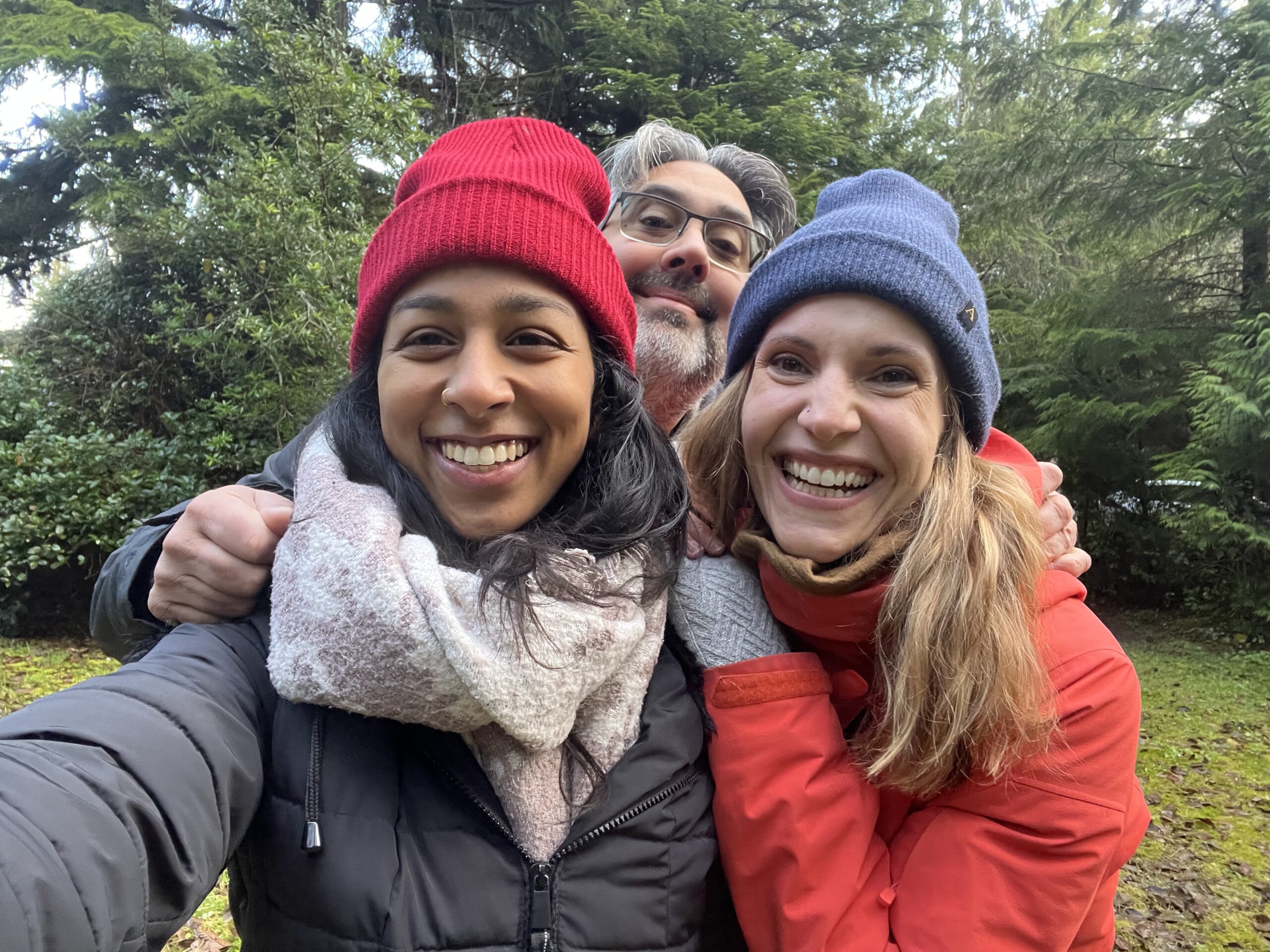
4) Mapping Out a Draft Schedule for How We’d Spend Our Time
Two weeks before the retreat, based on the needs expressed in the care survey, I drafted a schedule for the retreat that accounted for our respective ways of working, our intentions around caring for ourselves while we engage in this work, and our desire to embody the Mortal Method principles of finitude, embodiment, eros, connection, and meaning-making. The schedule protected time for opening and closing rituals, group thinking sessions (2 per day), breaks for meals, group harvest sessions (1 per day), and free time to spend however we wanted. It looked like this:

Mapping out the schedule helped us prepare for the retreat in two ways:
- It allowed us to honour the Mortal Method principle of finitude by visualizing how much time we had in a day. Seven days is a significant amount of time and it’s a finite amount of time. In defining the temporal boundaries of the retreat, the schedule gave us enough structure and accountability to feel secure about how we’d be spending our time, yet left enough room to be flexible in making in-the-moment calls and adjustments as needed.
- It allowed us to visualize and react to what a work day that prioritized our care needs could look like. My approach to creating the schedule was to start with blocking off time and space to honour our self-care needs and boundaries and allowing that to shape how we work and what we get done, rather than starting with what we need to get done and shifting our self-care/boundaries to accommodate that. My hope was that embedding and embodying the intention of care within the structure and logistics of the retreat would then translate into the ethos of care being felt in the programming and how we spent our time. To that effect, while typical work days range between 7.5 to 8 hours a day, I had only scheduled us to “work” for five hours each day. The rest of the time would be spent integrating, digesting, and tending to our brains, bodies, emotions, and spirits so that we could show up fully to the next session and the next day. While we agreed that this was a welcome shift from the typical conference / retreat / off-site schedule, seeing it in advance meant that we had time to adjust our expectations, tend to our judgments around “not working enough,” and prepare for a different experience than the one we were used to.
“Until you map it [the schedule] out, you just don’t have feelings about it. And then you map it out and you have feelings about it. And it’s good to have those feelings now because they’re just boxes and nothing is set in stone. I also find that having a plan makes it easier to go off plan because you have a sense of what you’re taking away from and where you can slot it in later.” – MM, Nov 17
“This is the beauty of that survey. We’ve all said this is when we do the best thinking, and so to have that time protected and set up to do that thinking well, because we’ve had a morning to get our bearings, because we’ve had nutritional breaks and times to move our body, I think it’s about quality over quantity, and the eight hour workday is a social construct. – JB, Nov 17
“Nothing about it [the schedule] triggers my anxiety. It just feels like there’s space and time for all the things we need. And that feels so reassuring. I was like, “OK, even if things don’t go as planned, then there’s just room built in. There’s room for life to happen, for delays or unexpected things.” – JB, Nov 24
5) Creating a Menu of Discussion Topics for Our Group Thinking Sessions
Once we had mapped out a draft schedule of the retreat, the question of whether and how we plan what we talk about in each of the group thinking sessions emerged. We felt it was important to have structure and intention to guide our exploration, but also didn’t want it to feel too regimented or predetermined. Julia shared a suggestion that met both needs,
“Might we consider a menu where we say “these are the things we’ve said we need to talk about in our content,” and then each day see what we feel like ordering? These are the things we want to talk about. Today, we might be inspired and feel like talking about this thing. So then the next day we talk about something else, so we always know what there is, but we can follow our flow…And for the stuff we don’t get through in our finite time, then we have a list afterwards of what we need to follow up on.”
As Albert reflected back, having a menu we could choose from was “prescriptive and responsive at the same time” and met our desires for both structure and flow.
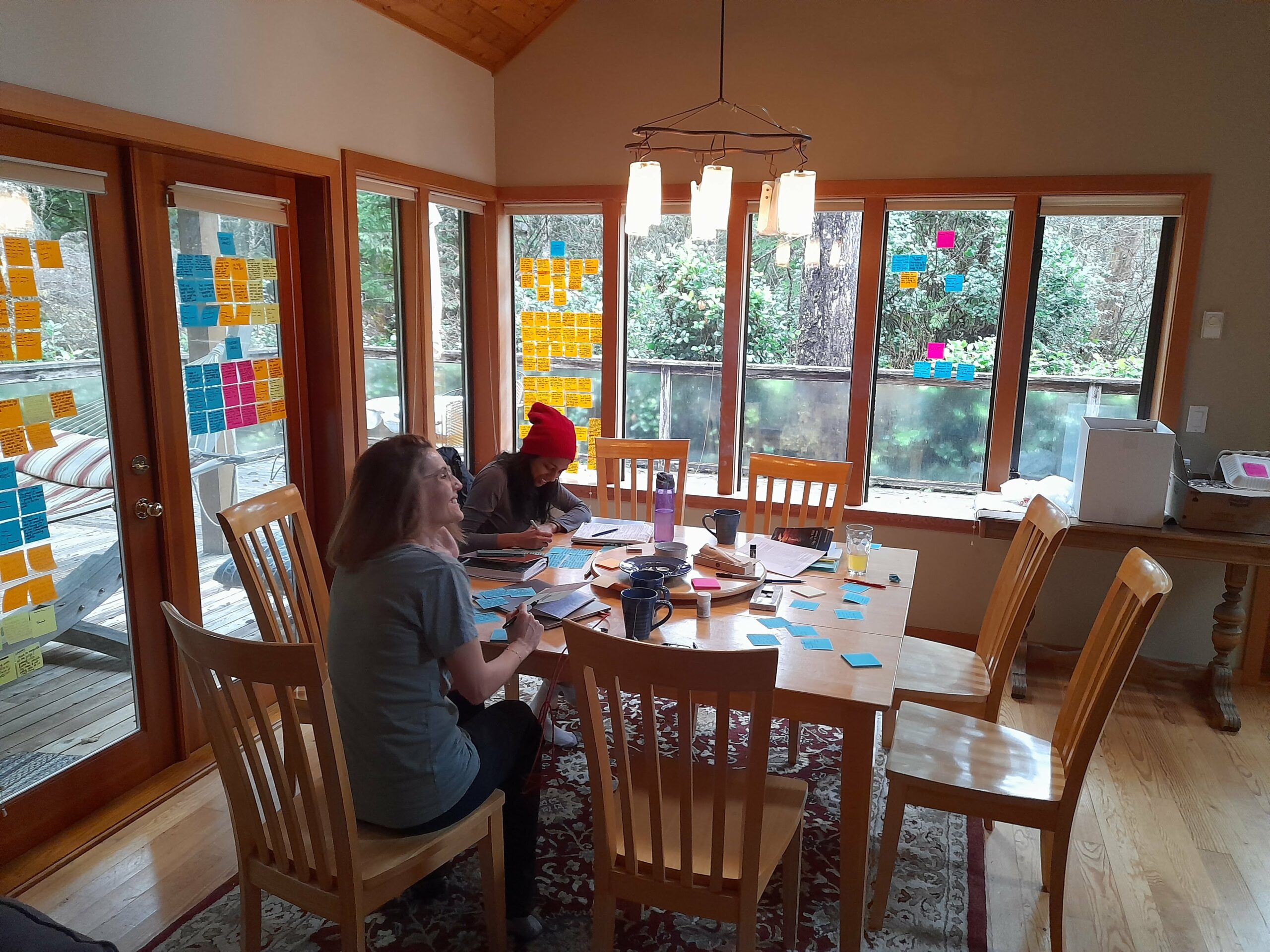
– – –
All in all, whether it be through the completing pre-care survey, engaging with the 30-day Apprenticeship with Mortality, having a draft deliverable ready before the retreat, mapping out how we’d spend our time, and/or drawing up a menu of discussion topics, the ways in which we prepared ourselves – mind, body, emotion, and spirit – before the retreat, all enhanced our ability to be present at the retreat.
JB: I was talking to a colleague yesterday about what we were doing. We’ve spent a month generating content, sitting with the ideas, doing more reading. We have a beautifully designed schedule. And I think now we just go and we chat. We’ve done all the prep work.
AB: And the apprenticeship, Mathura, the 30-day practice that you put together, my God, that is the tour de force. So congrats and thanks.
– Dec 1
“It’s like cooking time vs. prep time. When we had all our ingredients chopped up & prepped, the cooking happened pretty quickly.” – JB, at the retreat

